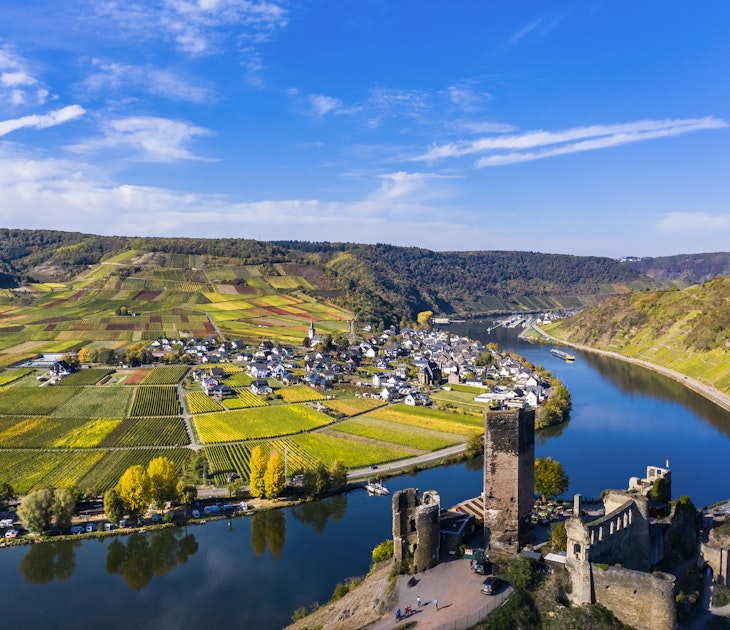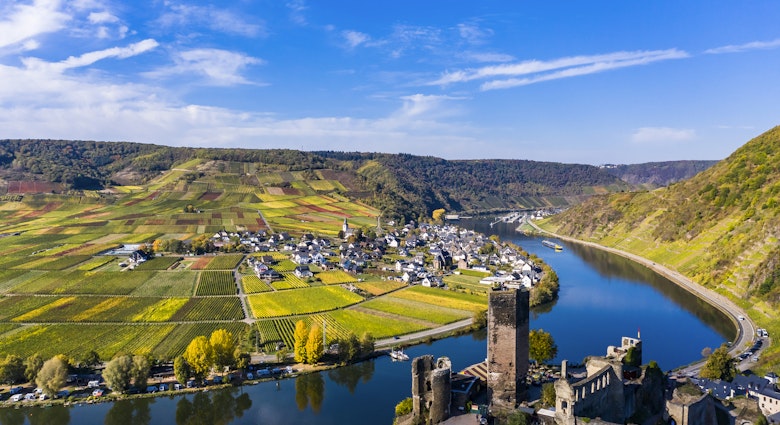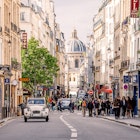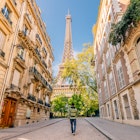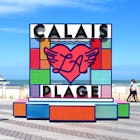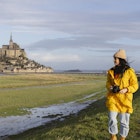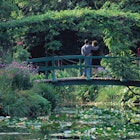Nicola is one of the writers on Lonely Planet's latest France guidebook. Here she shares ten incredible places to plan a French holiday.
So belle is France, that where on earth do you start when it comes to planning a trip to Europe’s unapologetically gourmet, cultural and artistic titan?
From vertiginous peaks and cut-throat valleys in the colossal French Alps and Pyrenees to sun-spangled blue vistas and chiseled cliffs along the country’s 4853km (3015 miles) of coastline, L’Hexagone (as the French call their hexagon-shaped land in western Europe) is bestowed with remarkable natural treasures. Pair this with a Herculean cache of human creations – ancient Roman towns, art-rich cities, a capital that is the last word in romance, and rural, jack-in-the-box hilltop villages – and you'd need years to really see it all.
To ensure a sweet taste of French art de vivre, move slowly between map pins – by train, bicycle or car in rural regions. Spend days, not hours, in each place and factor in ample time for mooching open-air markets, dégustation (tasting) with growers and endless lunch lazing.
Here are the 10 best places to do just that between sights and activities.
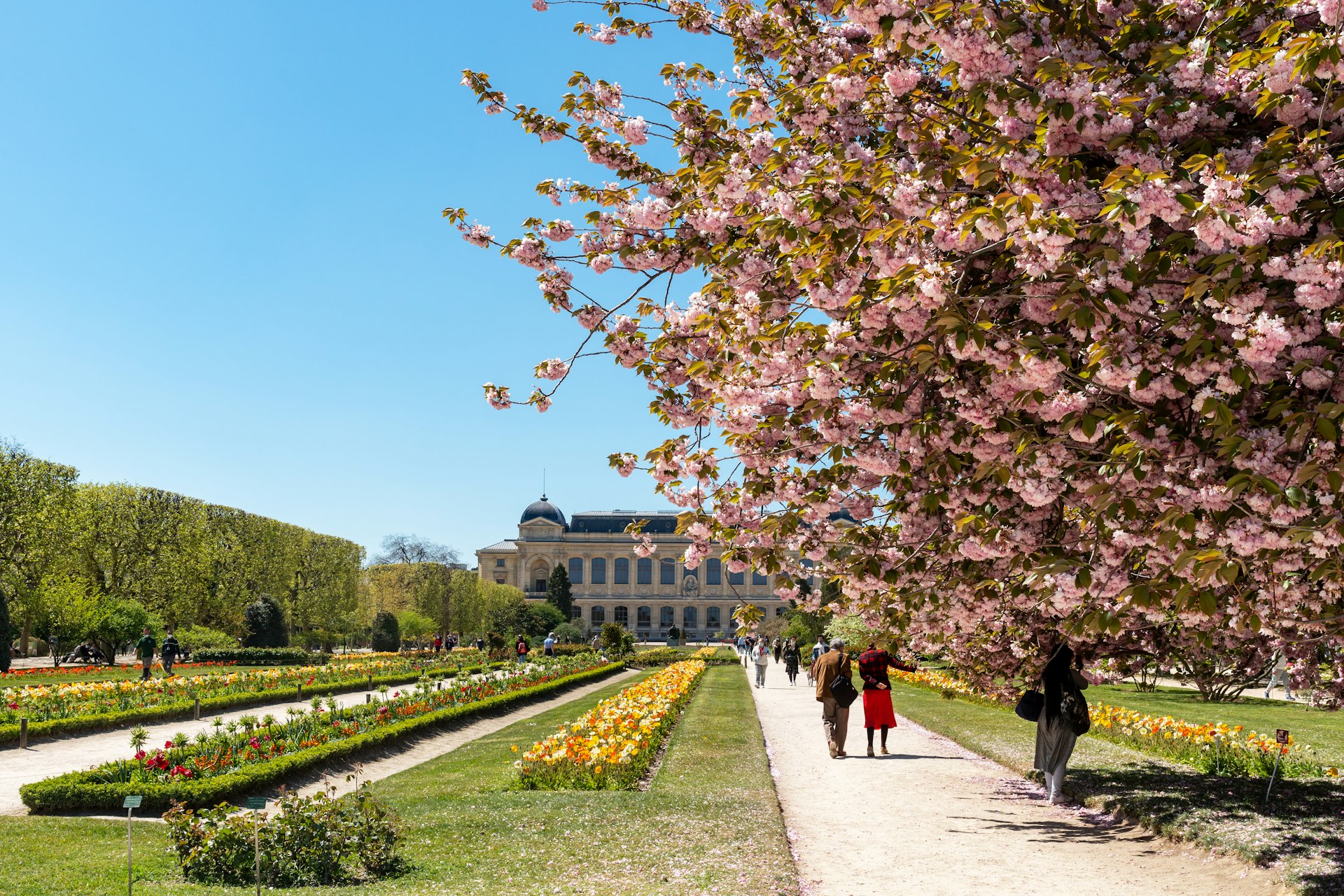
1. Paris
Best for a city break in spring
Elegant Paris, with its Haussmann boulevards and world-class art museums, is a heartthrob at any time of year: the city panorama from basilica-crowned Montmartre on a snowy winter day; cycling or playing the flaneur along the Seine or Canal St-Martin in fall; Cimetière du Père Lachaise after the rain; Sainte-Chapelle’s soul-piercing stained glass on a glorious summer afternoon…
But it is March and April’s iridescent, sun-dappled days that truly embody Paris’ unique energy and romance. Fresh goat cheese, creamy Saint-Marcellin and the tail-end of winter’s Mont d’Or appear in fromageries like Quatrehomme and Paroles de Fromagers (with cheese school and upcoming new cheese museum). Cherry blossoms paint Jardin des Tuileries, Jardin des Plantes and local secret Parc de Sceaux pink. Cafe terraces bloom, rooftop bars and restaurants (like vegetarian Créatures atop central department store Galeries Lafayette) emerge from hibernation. Paris’ festival calendar explodes.
Planning tip: Ditch the metro for blue-sky exploration along hundreds of miles of dedicated, two-way cycling lanes. Rent a public-sharing Vélib bike or a free-floating e-bike operated by Dott, Lime and Tier; download the appropriate app to locate, pay and unlock.
Read more: 11 things only the locals know in France (and now you do too)
2. Arcachon
Best for old-school seaside charm
Artists fell for the shimmering blues, grays and greens of northern France’s Côte d’Opale in the 19th century, and the Côte d’Azur’s golden light in the 20th. Neither has lost its razzle-dazzle. But for retro chic, Arcachon on the Atlantic Coast is the masterpiece. A deep, golden-sand beach laces the seafront of this unpretentious seaside town, with four quarters named after the seasons and a shoal of tasty seafood restaurants serving locally farmed oysters. Reserve a table at Chez Pierre.
Lingering for several days? Pair bucket-and-spade beach days with a coastal two-wheel spin to Europe’s mightiest sand dune, Dune du Pilat, and a boat trip across the bay to Cap Ferret, with a story-book lighthouse to clamber up, pine-scented beaches to surf and a traditional oyster-farming village to explore. If sea-kayaking rocks your boat, paddle with Arcachon Kayak Aventure to Île aux Oiseaux, a chameleon of a bird island that almost disappears at high tide.
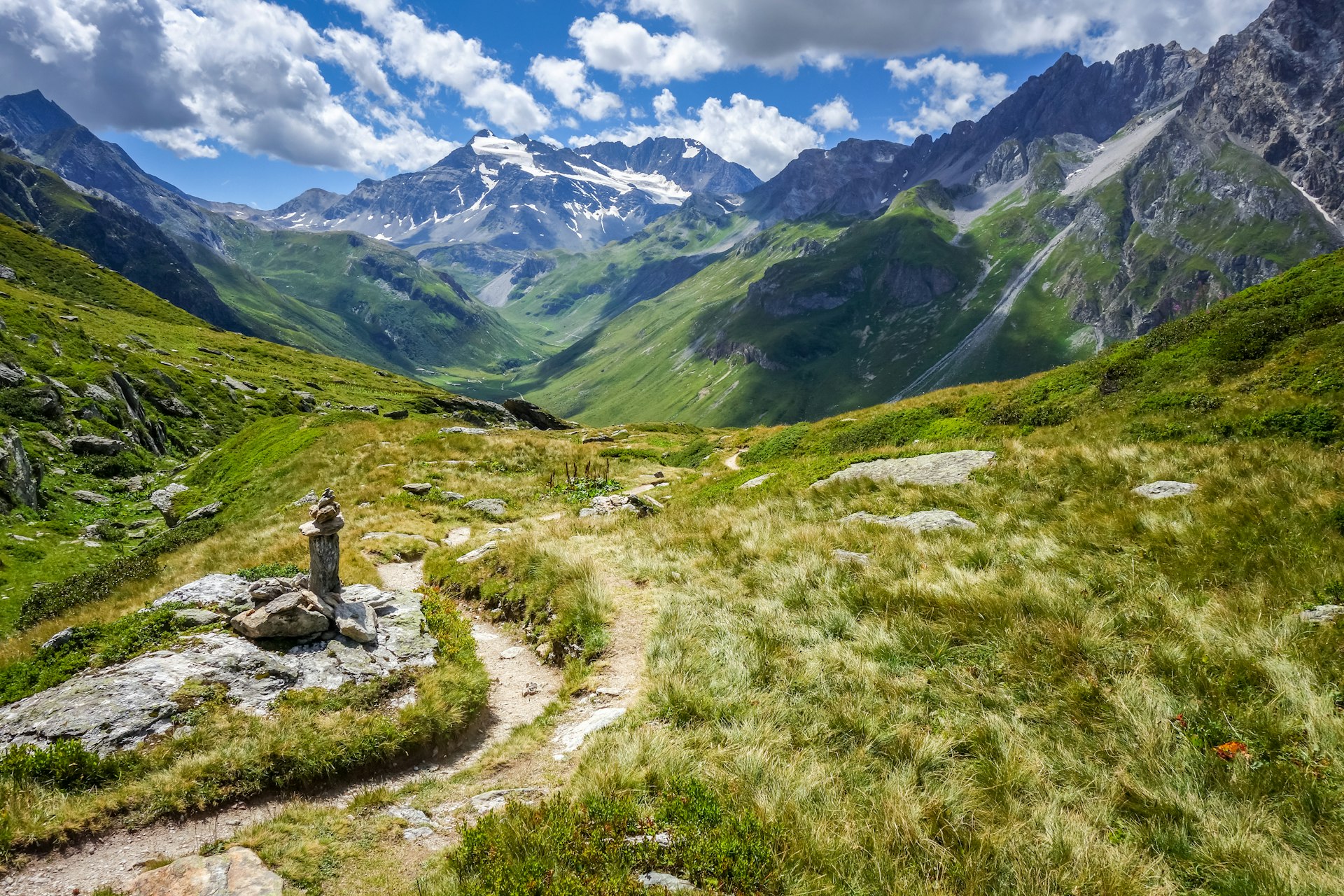
3. Parc National de la Vanoise
Best for hiking and wildlife encounters
Fizzing with adrenaline and natural beauty, France’s oldest national park embraces 529 sq km (204 sq miles) of mountain peaks, glaciers and pastoral valleys in the French Alps. World-class ski resorts Val d’Isère and Tignes (both open late November to April) are household names, particularly among powder addicts and springtime skiers. But it’s the hundreds of miles of summertime hiking trails (including the mythical GR5 from Lake Geneva in Haute-Savoie to Nice on the Med) and wildlife-watching ops that pull the real punch.
Well-marked trails spaghetti beneath 107 mighty peaks above 3000m (9842ft), home to France’s largest colony of wild ibex. Don’t miss the dramatic day hike to Lac des Vaches (“Lake of Cows”), a lake at an altitude of 2318m (7605ft) that doubles as pasture for grazing cows in August when the lake completely dries. Other months, “walk on water” across a 210m-long (689ft) boardwalk of stone slabs traversing its moraine-fringed length.
Planning tip: Pick up park information and trail maps at the Maison du Parc in the small alpine village of Pralognan-la-Vanoise, a 1½-hour drive from Chambéry in Savoie.
4. The Loire Valley
Best for romantic château-hopping
Nowhere does châteaux like France. For first-timers, the château-strewn Loire Valley – an hour's hop by train from Paris to Tours – assures instant immersion. Roman oenophiles first planted vines on the banks of the River Loire (look for Sancerre, Chinon, St-Nicolas de Bourgeuil and Montlouis-sur-Loire on wine lists). Then French royalty had a ball in megalomaniacal pleasure palaces and weekend hunting retreats during the Renaissance: 440-room Château de Chambord, garden-graced Château de Villandry and Chaumont-sur-Loire, and hopelessly romantic Château de Chenonceau must be seen to be believed.
Forget traipsing through endless fusty rooms filled with dated trappings. Château-hopping in this emblematic valley is about observing deer at dawn on Chambord’s colossal forested estate, watching foxhounds wolf down 100kg (220lbs) of meat in 10 seconds flat at Château de Cheverny, and feasting on five centuries of history at Gothic-to-Renaissance Château de Blois during a son-et-lumière (sound-and-light show). To bond with grassroots river life, navigate the Loire in a traditional flat-bottomed toue and overnight in a bivouac camp on its riverbanks.
Planning tip: Château-hop by bike. Research cycling routes, bike rental, cyclist-friendly accommodations et al with Loire à Vélo. Join the dots between castles around Blois with Les Châteaux à Vélo cycling trails.
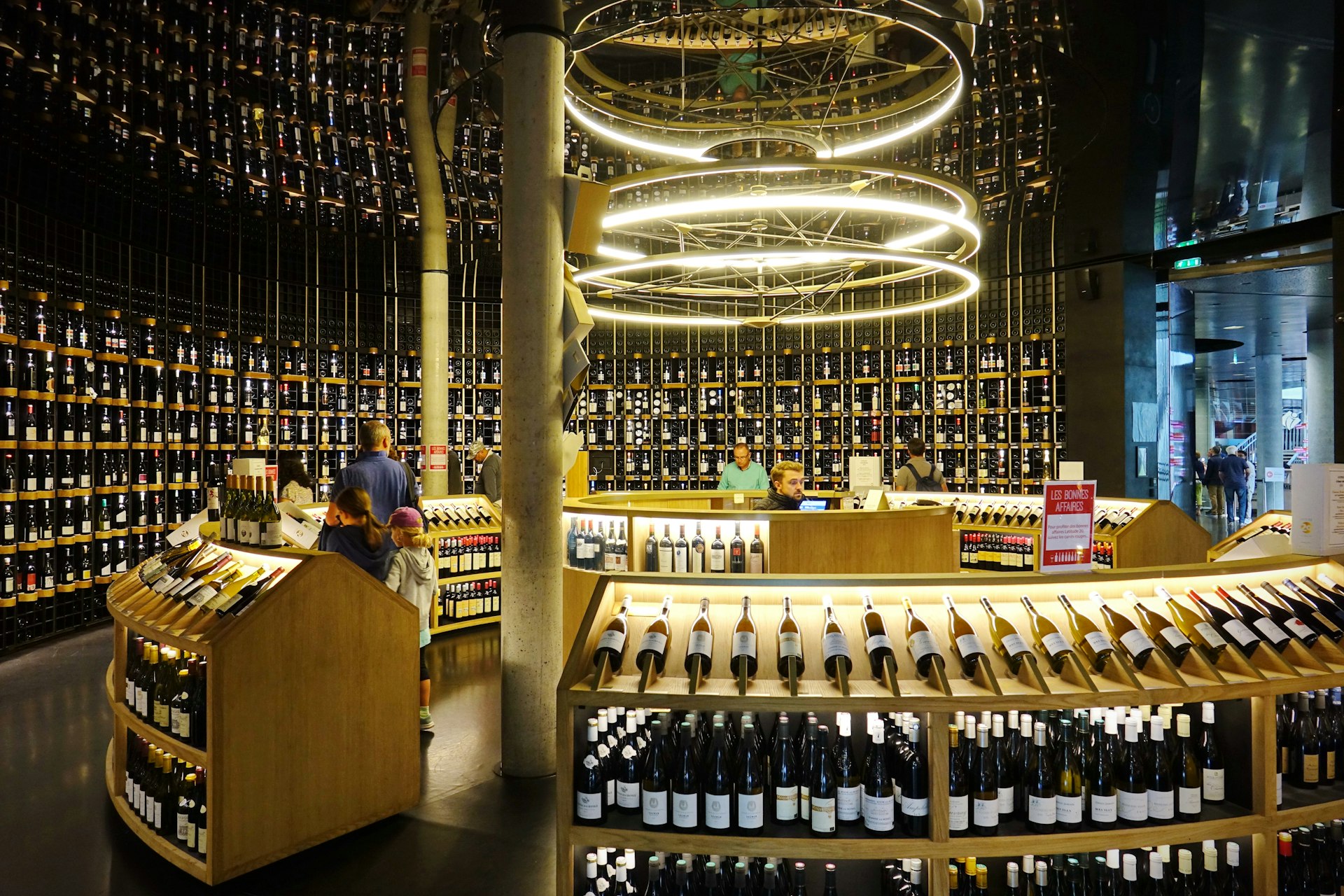
5. Bordeaux
Best wine region for tasting
Dégustation (tasting) is an essential part of daily life in France’s celebrated wine regions: Burgundy, Bordeaux, Champagne, Alsace, the Loire and Rhône Valleys, Provence and Languedoc. But it’s the handsome wine city of Bordeaux – where English merchants rolled barrels of claret (red wine) from quayside to ship in the 15th century and winegrowers stunned the world with mind-blowing Médoc and St-Émilion reds three centuries on – that pairs top-drawer vintages with easily-accessible visits around ancestral estates.
Memorable stops on a tasting grand tour around Bordeaux include the “Guggenheim of wine” La Cité du Vin; a wine flight at the superlative Bar à Vin inside Maison du Vin de Bordeaux; backstage cellar tours in town at Château Les Carmes Haut-Brion and out of town at Château Lynches-Bages (with state-of-the-art winemaking facilities designed by the architect son of Pei, creator of the Louvre glass pyramid).
Planning tip: Reserve cellar tours and lunch tables well in advance. In St-Émilion, dine among sun-soaked vines at Château Troplong-Mondot’s Les Belles Perdrix vineyard restaurant. In the Médoc, Nomade is the wine lover’s gourmet secret.
6. Normandy
Best northern region for art fiends and foodies
From prehistoric cave art at Lascaux to the Louvre’s Mona Lisa, France’s illustrious art portfolio spans all eras and genres. In northern France, Normandy’s extraordinary light spawned impressionism. French painter Claude Monet painted and repainted Rouen’s masterpiece cathedral obsessively in the late 19th century; ditto for sunrise in UNESCO port town Le Havre and backyard water lilies on his flowery country estate in Giverny.
Admire impressionism’s many Norman subjects from all angles on an art lover’s pilgrimage. Set up your easel to capture Étretat’s iconic white chalk cliffs on canvas. Wade across sand at low tide to visit Gothic abbey Mont St-Michel. Hop between art galleries in fashionable Honfleur and among oyster beds in the picture-postcard fishing village of St-Vaast-la-Hougue. Don’t miss Camembert: a visit to the village’s Ferme du Champ Secret – where rounds of buttery AOP Camembert cheese are still made with unpasteurized milk fresh from the farm’s herd of Normande cows – is unforgettable.
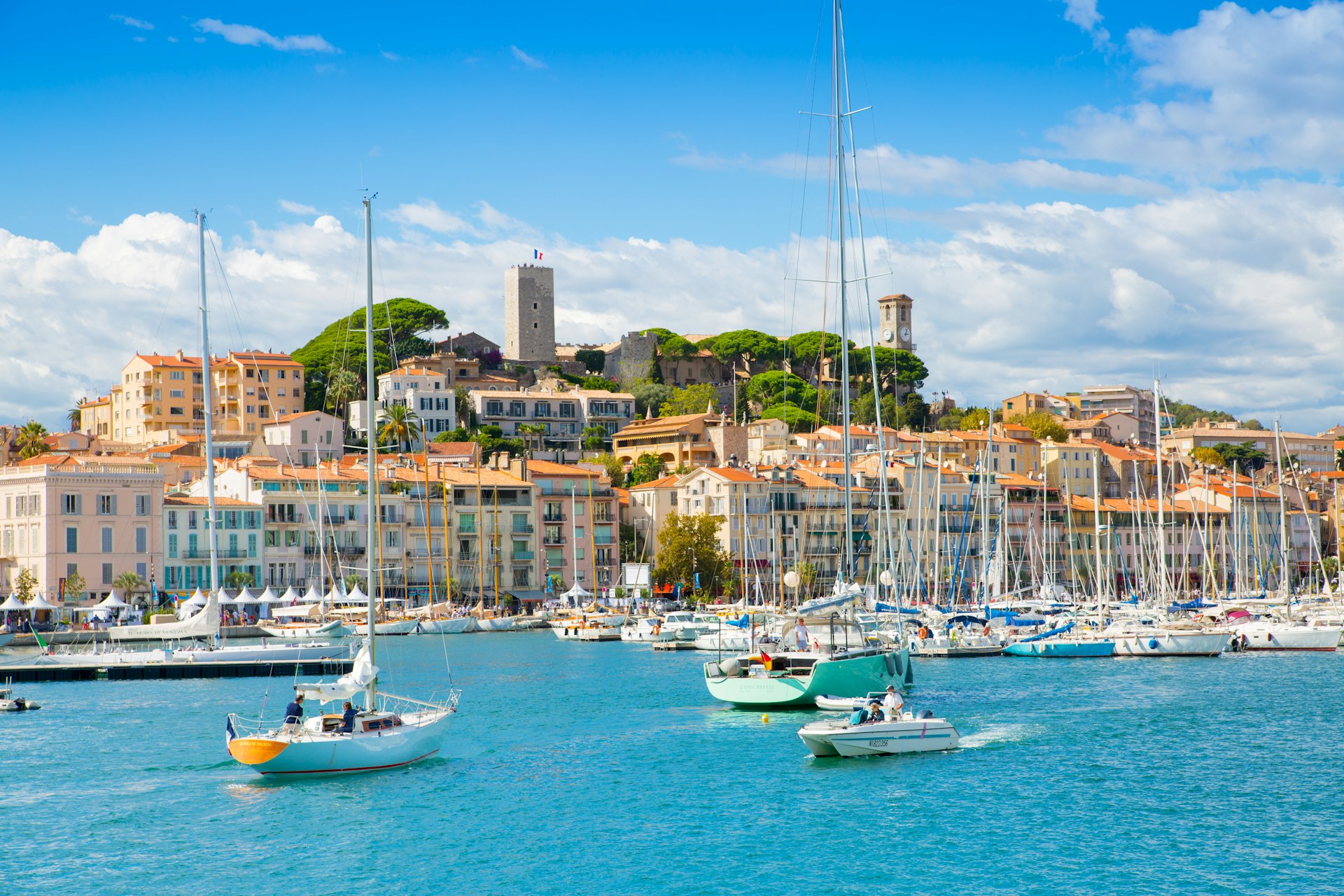
7. Côte d’Azur
Best for train travel (and winter sunshine)
When the urge hits to rattle past a cinematic mirage of vineyards, fruit orchards and indigo blue water, ride the rails aboard a slow train along the Côte d’Azur (“Azure Coast”). Beach-blessed stops on the coastal route along the Med between unsung Hyères and Italianate Menton (lemons galore!) include red-carpet Cannes, Picasso’s Antibes, ochre-hued fishing village Villefranche-sur-Mer, the seaside wedge of hilltop village Èze, and Monaco, the world's second-smallest country. Embrace lazy beach days, lively bar nights, sensational modern-art museums, historic gardens and open-air markets in spades.
The ultimate train journey south? A couchette in a sleeper aboard the revived Train Bleu (“Blue Train”) from Paris to Nice, beloved by 19th-century hivernants (winter vacationers). From 1896 onwards they began arriving in the Riviera capital by train in search of warmth, sunshine and nourishing sea air.
Planning tip: Pair coastal train trips with an inland rail adventure: to the perfume-making town of Grasse, off-grid into Côte d’Azur backcountry on the Train des Merveilles (“Train of Marvels”), or back in time from Nice to Digne-les-Bains aboard the narrow-gauge Train des Pignes.
Read more: The 8 most spectacular train journeys in France
8. Rocamadour
Best for a hilltop-village family adventure
The Luberon in Provence is renowned for its flush of hilltop villages (foodie Bonnieux, chateau-capped Lacoste, and the scenic hike from lavender-stitched Abbaye de Sénanque to eagle-nest Gordes are undeniably gorgeous). Yet moving west, it is the less fabled Lot where the tourist horde suddenly dissipates, and the natural grandeur and majesty of medieval villages take rightful center stage, strategically perched atop vertical crags and outcrops.
Cliff-hanger Rocamadour, an ancient stop on the epic pilgrimage route from Rome to Santiago de Compostela in Spain, has the epicurean bonus of producing its own eponymous cheese. It's crafted on goat farms such as La Borie d’Imbert, which opens its doors to fromage curios and goat-loving kids. Pair with tree trampolining (yes, really) at Saute-Mouton and wild swimming from pebble beaches along the frisky Lot and Dordogne rivers for an assured, no-holds-barred family adventure.
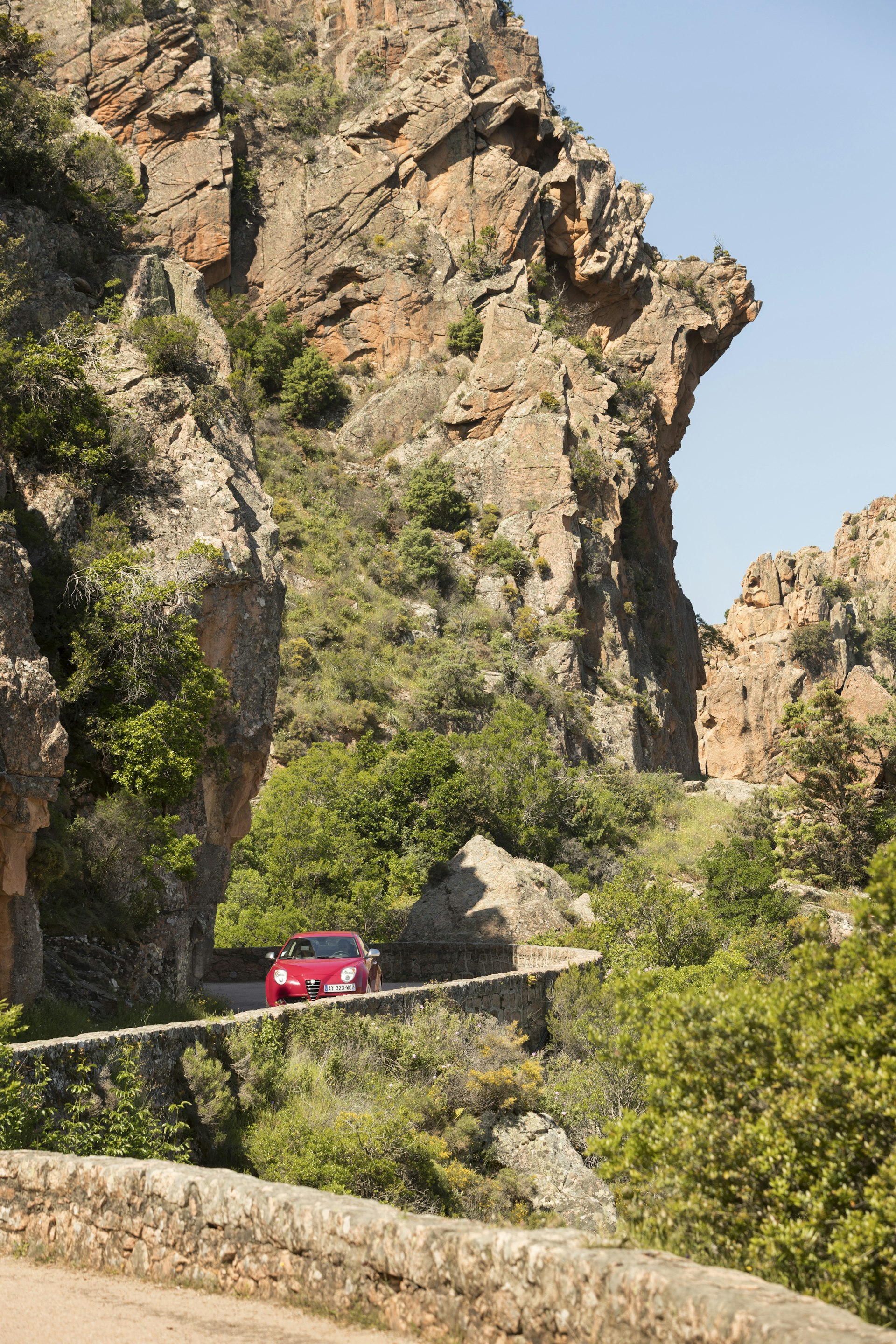
9. Corsica
Best for open-road escapes
Journeys are measured in hours, not miles, on Corsica – nicknamed Île de Beauté (“Island of Beauty”) for good reason. Golden beaches, turquoise coves and fire-red rocks color road trips here, punctuated with unhurried stops at time-forgotten hilltop villages and ancient churches, prehistoric relics, wineries and an overdose of foodie temptations.
With the exception of nose-to-tail August (when French holidaymakers also hit Corsica for their traditional summer break in the sun), there is no lovelier place to take your foot off the pedal and cruise through natural landscapes so beautiful you could weep. Narrow, serpentine coastal roads and torturously steep mountain roads infuse journeys with a heart-pounding dash of trepidation; and there’s bags of outdoor action (hiking, biking, sea kayaking) to let off steam. Bookworms take note, Corsican beaches (looking at you Bonifacio, uninhabited Lavezzi islands and Porto Vecchio) are sublime.
Planning tip: Add Corsican polyphony to your playlist to enjoy on the road: I Muvrini, Cantu U Populu Corsu and Voce di Corsica are classic artists.
10. Lorraine
Best for history geeks (and something different)
Few linger in Lorraine, the industrial underdog in northeastern France with ample contemporary allure. History buffs naturally gravitate to Verdun’s WWI battlefields and the well-marked Remembrance Circuit, a 25km (15-mile) driving and cycling route along the Somme River, where one of WWI’s bloodiest battles was fought in 1916. But there’s so much more to enthrall and thrill. See the striking Centre Pompidou in Metz, and Nancy’s wondrous art nouveau architecture and neoclassical central square, best soaked up over alfresco coffee or an early evening apéro (predinner drink). Take an after-dark guided tour of the straight-out-a-sci-fi-movie Parc du Haut Fourneau U4 ironworks in Uckange and experience bucolic green escapes in the gloriously people-empty Hautes-Vosges mountains. Embrace the quiet and difference.
Keep planning your trip to France:
Choose the best time to go to France for your perfect vacation
Check out these budget-friendly tips before you book
Save our kid-friendly guide to France


